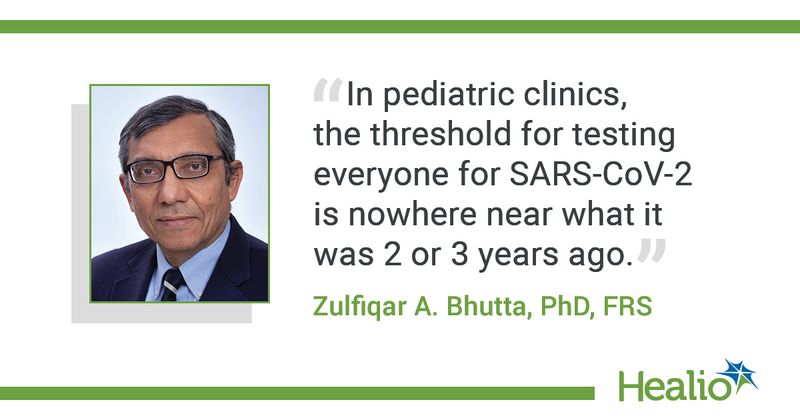Around 16% of children experience long COVID after infection, review finds
Key takeaways:
- Almost one in five children infected with SARS-CoV-2 showed one or more persistent symptoms 3 months later.
- Females were more likely to report long-term symptoms.
Approximately 16% of children and adolescents diagnosed with SARS-CoV-2 had a persistent symptom 3 months after infection, according to the results of a systematic review of more than 15,000 patients.
“We knew from our earlier work that the caseload among particularly adolescents and school children was not insignificant,” Zulfiqar A. Bhutta, PhD, FRS, from the Center for Global Child Health at the Hospital for Sick Children in Toronto, told Healio. “And we had anecdotal reports, but nothing systematic.”

The investigation was partially prompted by findings of long COVID in in low- and middle-income countries.
“We already had information that COVID was more prolonged, more complicated, and had greater proportion of adverse outcomes,” Bhutta said. “So, one of the other interests that we have was how much was known about persistent features of long COVID from other geographies.”
He did caution that the quality of data available for the pediatric age group regarding long COVID “is not at the same level as that we have from [the] adult population.”
“We are looking at a much smaller universe of good quality studies,” Bhutta said.
Bhutta and colleagues reviewed 27 cohort and four cross-sectional studies that included more than 15,000 children and adolescents and found that 16.2% reported experiencing one or more of a minimum of 20 core persistent symptoms and clinical features of long COVID, which included sleep disturbances, headaches, fatigue, depression, cough, throat pain and gastrointestinal illnesses.
“We did expect that there would be an impact, but we truly did not expect that it would be as high as what we found,” Bhutta said. “This actually tells you that it wasn't just as mild as people said the disease was in children.”
The researchers also noted from the data available that females were more likely to report long-term symptoms.
The authors noted that current studies on long COVID in the pediatric population were very heterogeneous, biased and full of limitations, given the rush to get information out and the interest in COVID-19 studies among journals.
“One of the mantras that I had from a very early stage of the pandemic was, ‘It doesn't really matter in children, it's a mild disease,’” Bhutta said. “That may be true for very young children, but [not] for school-aged children and adolescents.”
“Obviously, we don't have long-term data,” Bhutta said. “So, we as yet cannot say anything about what might be the implications for children persisting with this for years and years. That will require future studies. But it does encourage people to look at the subgroup a lot more closely, and to institute preventive measures.”
He said that “particularly in pediatric clinics, the threshold for testing everyone for SARS-CoV-2 is nowhere near what it was 2 or 3 years ago.”
“What we're saying is, if there is history of contact, and if there are features suggestive of COVID, such as fever or cough, even if you suspect that there may be just a simple respiratory infection, keep COVID in mind,” Bhutta said. “Testing for COVID should be done from a simple point of view of ensuring children do have adequate follow-up and don't have persistent features, which could have implications much more long term.”
“We would like to make sure that the issue is not forgotten,” Bhutta said.

